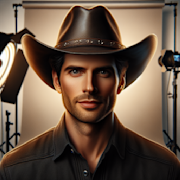Epic Tales: The Cinematic Legacy of Lawrence of Arabia

Lawrence of Arabia, directed by David Lean and released in 1962, is a cinematic masterpiece that has left an indelible mark on the history of film. Spanning nearly four hours, this visually stunning epic tells the captivating story of T.E. Lawrence, a British officer who played a pivotal role in the Arab Revolt against the Ottoman Empire during World War I. With its breathtaking cinematography, compelling storytelling, and groundbreaking approach, Lawrence of Arabia has established itself as a timeless classic. In this blog post, we will explore the cinematic legacy of this incredible film, from its production challenges to its lasting influence.
1. The Making of a Masterpiece: Challenges on Set
Behind the scenes, the production of Lawrence of Arabia was a monumental undertaking. Filming took place in remote locations such as Jordan and Morocco, adding to the complexity of the project. The expansive desert landscapes presented numerous challenges, from extreme temperatures to sandstorms, which often disrupted shooting schedules.
Furthermore, the film’s director, David Lean, strived for authenticity, often pushing the boundaries of what was thought possible in cinema at the time. Lean demanded a level of attention to detail that was unprecedented, including using real camels and horses instead of relying on animatronics or special effects. The efforts to recreate the historical experience were, at times, exhausting for the cast and crew, but undeniably contributed to the film’s unparalleled realism.
2. Cinematic Brilliance: The Visual Spectacle
Lawrence of Arabia is revered for its mesmerizing cinematography, which provides viewers with a cinematic experience like no other. Cinematographer Freddie Young’s use of the expansive desert landscapes creates a breathtaking backdrop that complements the hero’s journey portrayed on screen. From sweeping shots of the vast dunes to the intense battle sequences, Young’s mastery of light and composition brings the story to life.
One of the most iconic scenes is Lawrence’s first appearance in the desert. As the camera pans across the vastness of the desert, the audience’s gaze is captivated by the small figure of Lawrence on the distant horizon. This sequence perfectly captures the grandeur and sheer scale of the desert, immersing viewers in the world of Lawrence’s adventures. The film’s visual mastery, combined with Maurice Jarre’s evocative score, creates an unforgettable sensory experience.
3. The Power of Character: Peter O’Toole’s Riveting Performance
Peter O’Toole’s portrayal of T.E. Lawrence is nothing short of extraordinary. His performance showcases the complexity and internal struggles of a man torn between two worlds. O’Toole’s ability to capture Lawrence’s charisma, vulnerability, and inner conflicts is a testament to his talent as an actor.
Lawrence’s transformation throughout the film is truly captivating. The character’s initial idealism and fascination with the Arab culture gradually give way to disillusionment and the harsh realities of war. O’Toole’s nuanced performance allows the audience to empathize with Lawrence’s journey, making every triumph and tragedy deeply felt.
4. Legacy and Influence: Inspiring Future Filmmakers
The impact of Lawrence of Arabia extends far beyond its initial release. It has become a timeless reference point for filmmakers and continues to inspire contemporary directors. The film’s epic scope, meticulous attention to detail, and innovative techniques have influenced generations of filmmakers.
Directors such as Martin Scorsese, Steven Spielberg, and George Lucas have all cited Lawrence of Arabia as a major influence on their work. Spielberg even referred to Lawrence of Arabia as his “favorite picture of all time.” The film’s visual storytelling approach, character development, and the use of practical effects have all left an indelible mark on the filmmaking industry.
5. Lawrence of Arabia: A Cinematic Journey Worth Experiencing
In conclusion, Lawrence of Arabia remains an unparalleled masterpiece that continues to captivate audiences today. Its production challenges, cinematic brilliance, and timeless performances have contributed to its lasting legacy. From its awe-inspiring visual spectacle to the riveting portrayal of T.E. Lawrence by Peter O’Toole, the film transports viewers to a different time and place.
Lawrence of Arabia’s influence on the world of cinema cannot be overstated. Its impact on filmmakers and its status as a classic serve as a testament to its enduring relevance. Whether you’re a cinephile or simply appreciate the power of storytelling, Lawrence of Arabia is a must-watch film that stands the test of time. Experience the journey of T.E. Lawrence and immerse yourself in this cinematic triumph.

Alberto Miller
Movie Fanatic
More From Classics Authority Movies

Movie
Shakespeare in Love (1998)

Movie
The Thing (1982)

Movie
Classic Hollywood Trailblazers: Empowering Women in Cinema

Movie
Rio Bravo (1959)

Movie
Rome, Open City (1945)

Movie
Roma (2018)





